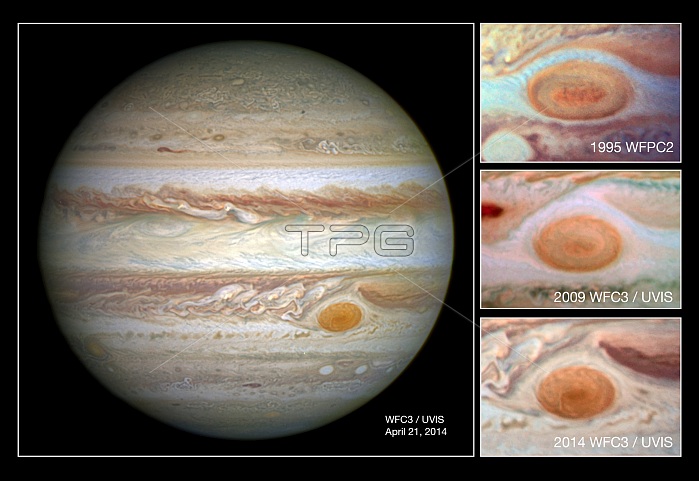
Jupiter's Great Red Spot, a swirling storm feature larger than Earth, is shrinking. This downsizing, which is changing the shape of the spot from an oval into a circle, has been known about since the 1930s, but these new images show the spot at a smaller size than ever before. In the comparison images on the right, the top was taken by HST's WFC2 in 1995 and shows the spot at a diameter of just under 21000 km; the second image shows a 2009 WFC3 image of the spot at a diameter of just under 18000 km; the third image is the newest from WFC3 taken in 2014 with the spot at its smallest yet, with a diameter of just 16000 km. Jupiter's Great Red Spot is a churning anticyclonic storm. It shows up in images of the giant planet as a conspicuous deep red eye embedded in swirling layers of pale yellow, orange and white. Historic observations as far back as the late 1800s gauged this turbulent spot to span about 41,000 kilometers at its widest point, which is wide enough to fit three Earths comfortably side by side. The spot is getting smaller by just under 1000 kilometers per year. The cause of this shrinkage is not yet known.
| px | px | dpi | = | cm | x | cm | = | MB |
Details
Creative#:
TOP22314738
Source:
達志影像
Authorization Type:
RM
Release Information:
須由TPG 完整授權
Model Release:
N/A
Property Release:
No
Right to Privacy:
No
Same folder images:

 Loading
Loading